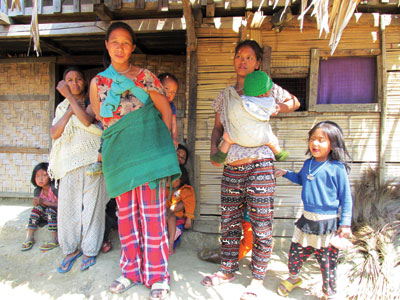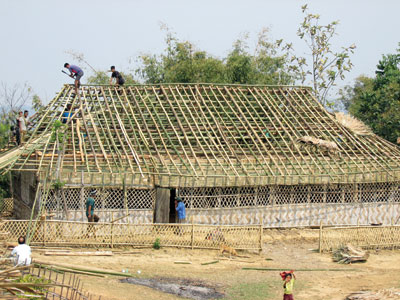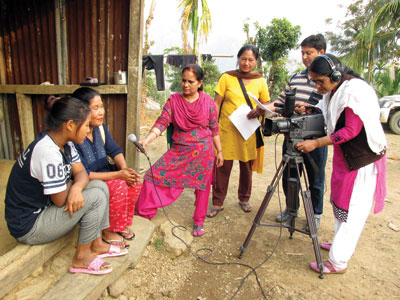For the past two years, RDI has been supporting the GreenPly Industries to implement their corporate social responsibilities (CSR) activities in the northeastern state of Nagaland. Under this program, recently from 26 February to 11 March 2017 a three-member media team from RDI visited the Tizit block of Mon district of the state. The purpose of the visit was to develop awareness material on personal hygiene and sanitation considering the practices prevalent at local level. The documentaries will be screened by GreenPly in these communities to sensitize them on hygiene and sanitation practices. The team shared some of their experiences:
The team visited various places in Konyak region. Languages spoken are local dialect of Konyak mixed with Assamemse and Bengali. People have maintained traditional lifestyle in their environment, infrastructure, language and costumes by embracing simplicity in community living. Almost all the houses in the countryside are made in traditional style using bamboos and other locally available wooden materials. The landscape is beautifully enriched with tea gardens, betel nut, banana, cardamom and bamboo. Head of the locality or village is called “Aang.” Aang has the highest place in their society bestowed with social authority to exercise his powers towards governance and justice.
Aoleang, Konyak’s spring festival celebrated in the first week of April every year symbolically is related with beginning of good time for life and agriculture. The festival is celebrated by performing collective rituals, dances and local delicacies.
Travelling by road was difficult due to their low upkeep and maintenance. The reason being that governance had lost its meaning due to multi-faceted pressure by localities and the rise of militancy. Modernization slowly develops there since most people are dependent on natural resources available in their vicinity.
In rural areas early marriages, especially of girls aged 15-17 years is a normal phenomenon. Most of the girls are dropouts after 10th grade. Healthcare and hygiene practices are different and cannot be designated as safe or adequate. Some of the obvious reasons observed were scarcity of water, lack of awareness, traditional set ups and normalcy attached with it.
The community seems contented as asked from localities. They did not express any serious concern or having problems related with needs of life, viz, healthcare facility, education, water, sanitation, and livelihood. Community feeling is high and despite hardships migration phenomenon is not there.



